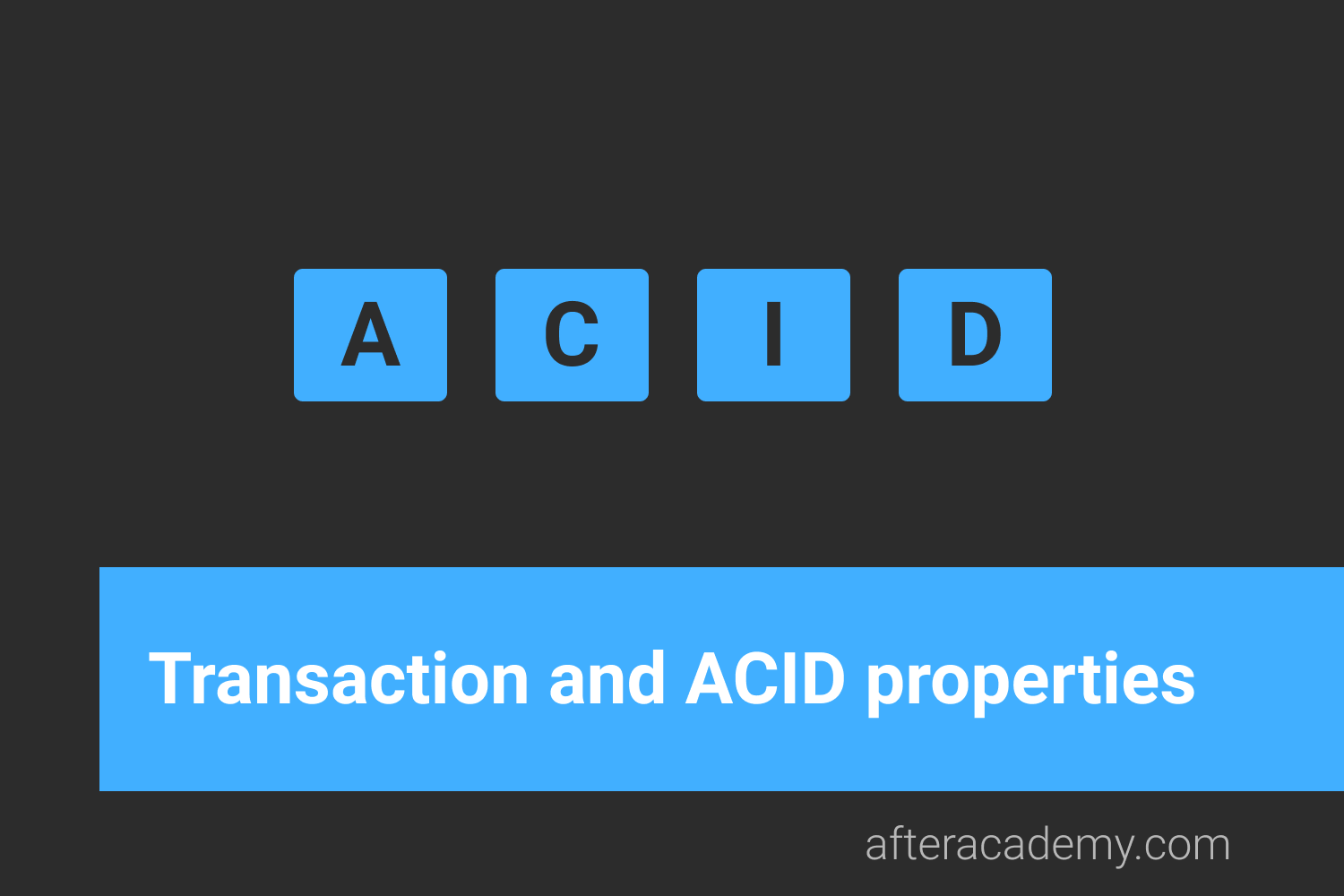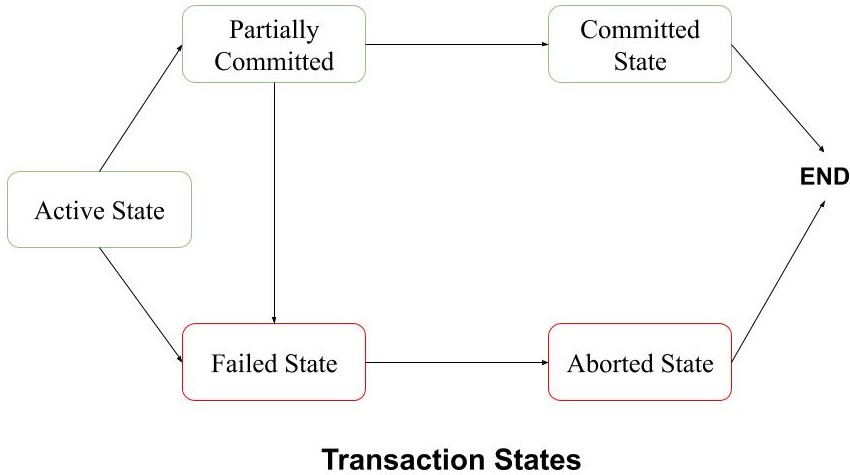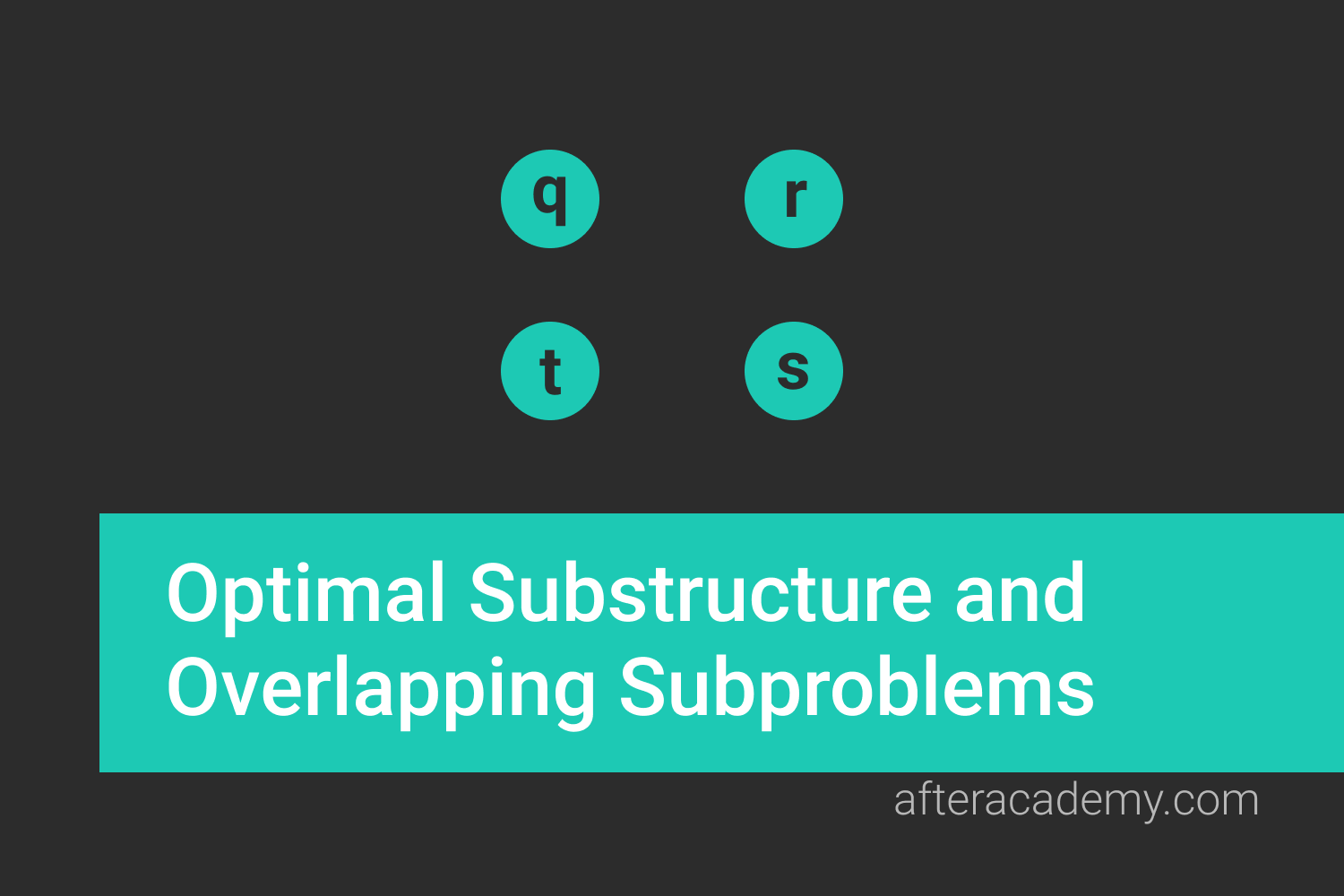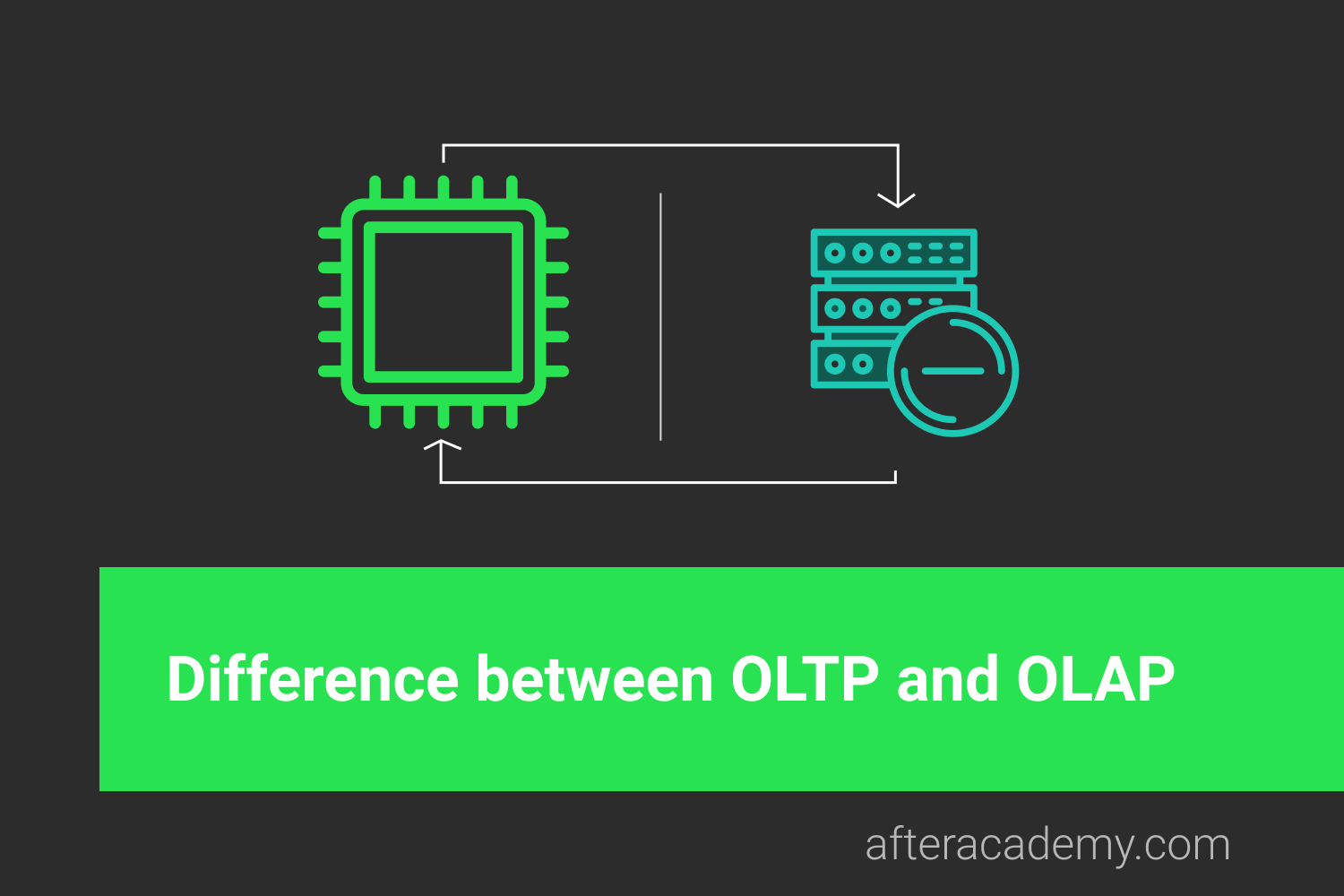What is a transaction? What are ACID properties?
AfterAcademy Tech
•
16 Mar 2020

A database is used by many users and processes at the same time as it is a shared resource. The IRCTC website is used at the same time by millions of users. Many people are concurrently booking tickets but how is such a large database always consistent. The transactions that we do on such websites are concurrently managed. There are various properties through which the transactions occurring in the database are managed. These properties are the ACID properties. So, in this blog, we will see all these properties and the states of the transaction in detail. So, let's get started.
Transaction
A transaction is a single logical unit of work formed by a set of operations. the operations which are between the beginning and the end of the transaction are counted as a single logical unit. The database is inconsistent during the transaction. It goes into a consistent state only when the transaction has occurred successfully. It is very important to have a successful transaction.
For example, if you are sending $100 from your account to your friend's account, then the money deducted from your account should be reflected to your friend's account.
States Of Transaction
A transaction goes through any different states throughout its lifecycle. These states also known as transaction state are as follows:
- Active State: This is the first state of the transaction and any transaction which is being executed is in this state. The changes made are stored in the buffer in the main memory.
- Partially Committed: After the last operation is executed the transaction enters into the partially committed state. This is said partially committed because the changes made are still in the buffer in the main memory.
- Failed State: A transaction enters into the failed state if some checks fail in the active state, some error occurs in the active or partially committed state and the transaction cannot be executed further.
- Aborted State: If any transaction has reached the failed state then the recovery manager rollback the database to its original state from where the execution had started.
- Committed State: A transaction from the partially committed state enters into the committed state if all the operations are executed successfully. It is not possible to rollback from this state and it is a new consistent state.

ACID Properties
For maintaining the integrity of data in the database the certain properties are followed by all the transactions that take place in the database. These properties are popularly known as ACID properties where A is for Atomicity, C for Consistency, I for Isolation and D for Durability.
Atomicity
This property states that the transaction should either occur completely or doesn't occur at all. The transaction should not occur partially. Each transaction is treated as a unit and the execution is completed else the transaction is aborted. If any transaction is aborted all the changes made are reversed back. If the transaction occurs completely then only it is committed.
Example: Suppose there are two accounts A and B having a balance of Rs 1000 and Rs 500 respectively. Now, if you have to transfer Rs 200 from Account A to Account B then this transaction involves two operations. First, debiting Rs 200 from Account A and second, crediting Rs 200 to Account B.
Now, let's consider a situation where the first operation has occurred successfully i.e. Rs 200 was debited from Account A and the balance in Account A is now Rs 800. But, the second transaction failed. So, the Rs 200 was not added to Account B. This can lead to inconsistency in the database. So, either the transaction should fail or both the operations should occur if the transaction has to be successful. The atomicity thus helps in ensuring the correctness of the database.
Consistency
This property ensures that the integrity of the database is maintained before and after the transaction. It ensures that when any transaction is executed then the database should move from one consistent state to another consistent state.
Example: In the above example, Account A and Account B have Rs 1000 and Rs 500 respectively. So, the total amount is Rs 1000+ Rs 500 i.e. Rs 1500 before the transaction. When any transaction is executed then the total amount should also be Rs 1500. If the transaction occurs then Rs 200 will be deducted from Account A and added to Account B. So, the total amount after the transaction will Rs 800 + Rs 700 i.e. Rs 1500. So, this property ensures the consistency of the database. If any operation in the transaction fails it will produce inconsistency in the data.
Isolation
This property tells that each transaction is executed in the system such that it is the only transaction in the system. If more than one transaction is taking place in parallel, then the occurrence of one transaction will not affect the other transaction. If any transaction is using a data item then it can’t be used by other transactions until the first transaction ends.
Example: Suppose we have two transaction T1 and T2 which is defined as follows.
Transaction 1: T1
BEGIN
Read(X)
X=X+50
Write(X)
Read(Y)
Y=Y-10
Write(Y)
END
Transaction 2: T2
BEGIN
Read(X)
Read(Y)
Z=X*Y
Write(Z)
END
Let X= 40, Y = 20.
Now, consider a situation where T1 has been executed until Read(Y) and then T2 starts. Due to this, the transaction T2 reads the incorrect value of Y. It reads the value as 20 and the operations which it should have been performed by taking the value as 10, T2 will perform by taking the value as 20. This leads to inconsistent results. The output of the transaction T2 should have been X*Y i.e. 90*10(=900) but it will produce the output as 90*20 i.e. 1800 as T2 has read the incorrect value of Y. This problem happened because of the transaction result of T1 was made available for T2. So to avoid any such problem the transactions take place in isolation.
Durability
This property ensures that once the changes are made in the database these changes persist in the database even if any system failure occurs. These changes are saved permanently in the non-volatile memory. It is the responsibility of the recovery manager to ensure the durability in the database.
This was about the transaction and ACID properties of a transaction. If you have come this far, it means you liked what you are reading. Hope you learned something new today.
Do share this blog with your friends to spread the knowledge. Visit our YouTube channel for more content. You can read more blogs from here.
Keep Learning 🙂
Team AfterAcademy!
Written by AfterAcademy Tech
Share this article and spread the knowledge
Read Similar Articles
AfterAcademy Tech
Linked List and its Properties
In this blog, we will discuss about the linear data structure called Linked Lists. We will discuss its properties, advantages, and disadvantages. So, let's get started

AfterAcademy Tech
Optimal Substructure and Overlapping Subproblems
In this blog, we will understand the optimal substructure and overlapping subproblems property. We will also discuss how the problems having these two properties can be solved using Dynamic programming.

AfterAcademy Tech
What is the difference between OLTP and OLAP?
In this blog, we will first discuss what is Online Transaction Processing and Online Analytical Processing and then learn the difference among them.

AfterAcademy Tech
What is a tree data structure?
Tree is a widely-used powerful data structure that is a viable addition to a programmer’s toolkit. We shall be discussing the types and properties of trees in this blog.
